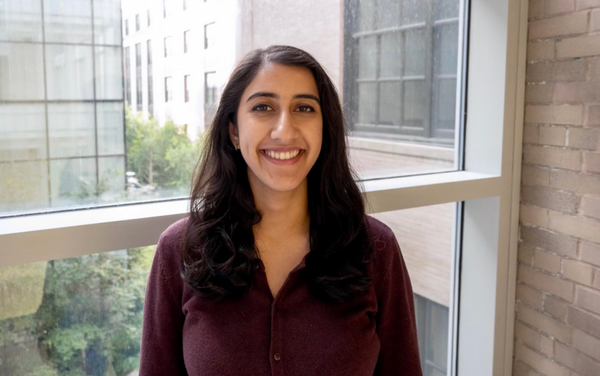Question 1: What technologies are you working with, or have you worked with?
Earth Hacks is an environmental hackathon organization I co-founded and currently direct that harnesses hackathons as a form of climate action. Since Earth Hacks functions as an “infrastructure” organization, focusing on advancing hackathons as an innovation format, we work with a wide range of technologies present at our events. Environmental hackathons take a multidisciplinary approach, spanning technologies commonly used in more traditional, computer science-focused student hackathons, like app development platforms and data science applications, to hardware prototyping and low-tech projects that focus more on process or information design.
Question 2: How do you take account of MIT’s obligation to pursue the public interest in the work that you do?
Fundamentally, I believe that encouraging and enabling more people to work on climate and environmental issues is in the public interest because climate change is a global phenomenon that affects all of us, albeit extremely unequally. In our work at Earth Hacks, the team carefully considers the motivations behind encouraging students to work on different climate and environmental issues at hackathons, as well as learning outcomes, and we take special care to not advance technosolutionism — a phenomenon where technological projects are elevated as a quick, flawless, and correct way to solve complex issues. While we do still encourage students to work with technologies they are interested in, we try to encourage them to think about the scope and context of the application. We also encourage students to continue developing their projects after events if they are interested, but explicitly frame challenge statements in our pedagogical design as primarily educational or primarily outcome-focused through our two main programs, student and organizational hackathons, respectively. This allows us to segment our focus, recognizing these events as great opportunities for experiential education, as well as mechanisms for rapid prototyping. We also educate students about power dynamics and systemic issues when it comes to climate and environmental change, including fostering discussion about the origins of the concept of a personal carbon footprint, which researchers such as Geoffrey Supran point out was created in an advertising campaign by the oil company BP, and raises questions of environmental justice issues in the technology space.
Question 3: What more could you and others do to help MIT team meet its social obligation to pursue public interest technology?
There are several opportunities for institutions like MIT to further meet obligations to pursue technology in the interest of the public. One focus area I have developed with the Earth Hacks teams is expanding educational initiatives to deepen students’ understanding of the systemic nature of climate issues. This involves creating and integrating more comprehensive resources and discussions on environmental justice considerations and the socio-political aspects of climate change, providing an educational experience that many students – especially those in STEM fields such as computer science or my profession of electrical engineering – are not receiving. Secondly, an increased focus on the process of community engagement with grassroots groups can provide opportunities for resource and knowledge exchange, as well as provide insight into the complex nature of climate issues. Lastly, institutions like MIT should think about supporting more process innovation in the climate tech space, this includes carefully considering how and why we elevate certain technologies, identifying what educational opportunities better serve students in the context of a changing climate, and questioning what systemic approaches and policies can help advance a just climate tech ecosystem would move us towards centering the public interest in the climate tech space.
Sanjana Paul is the co-founder and executive director of Earth Hacks. She holds a bachelor's degree in electrical engineering and physics and is a graduate student in environmental policy and planning at MIT.

